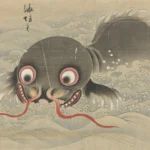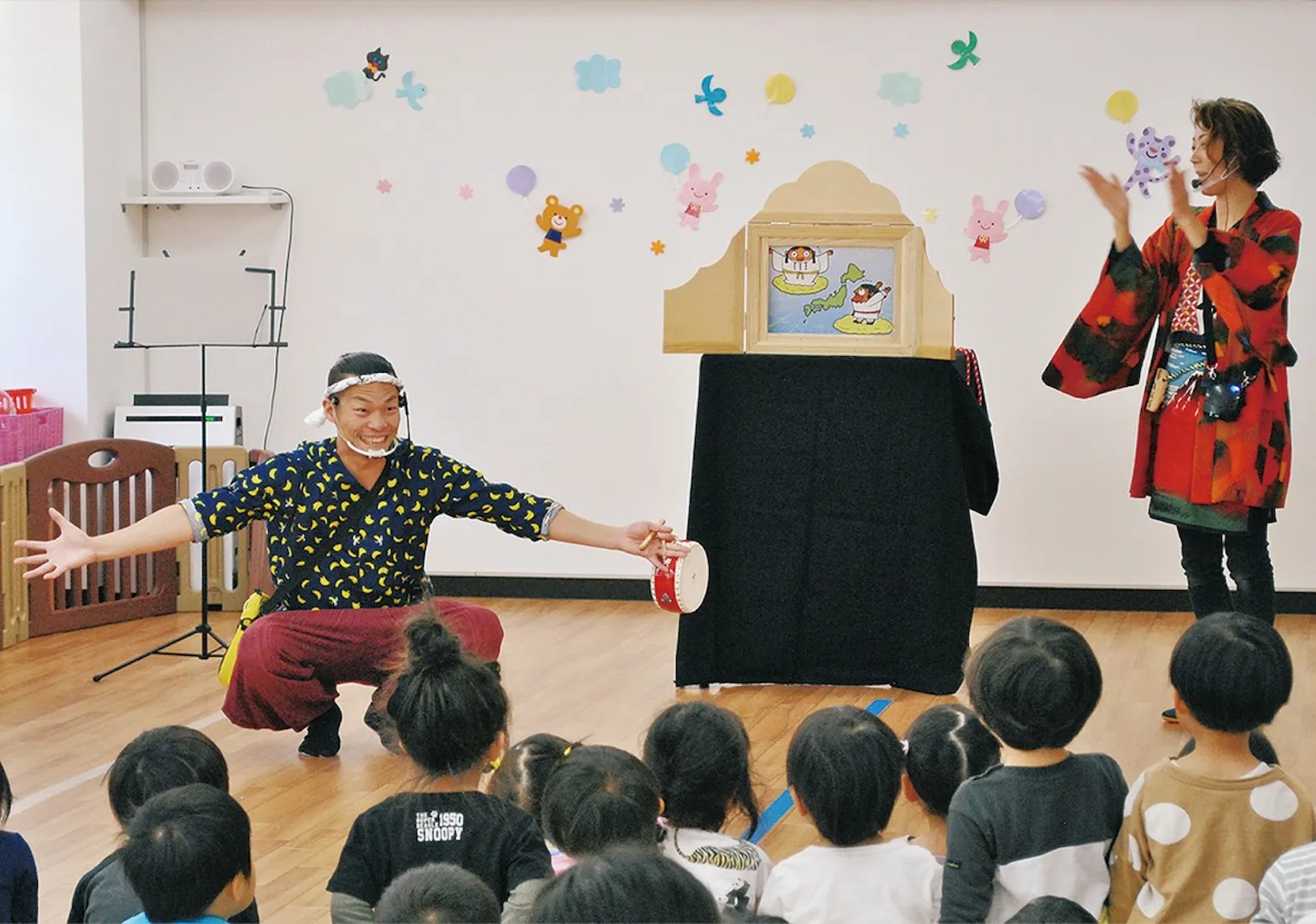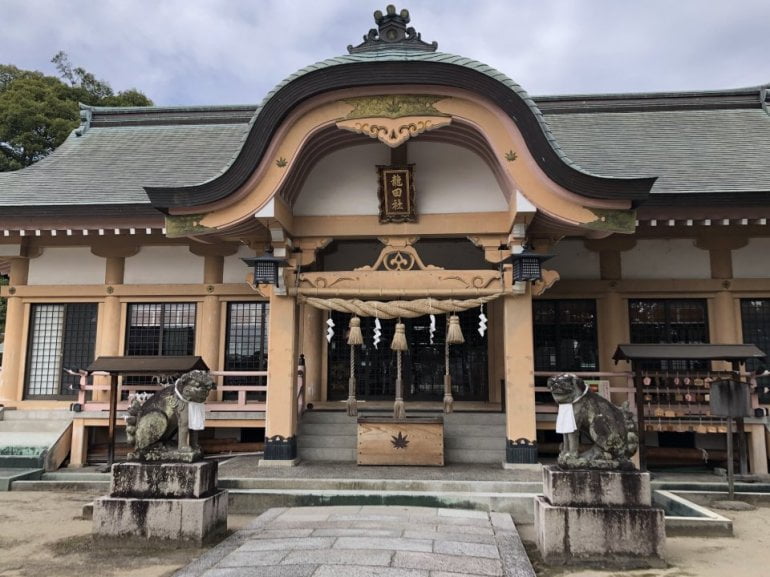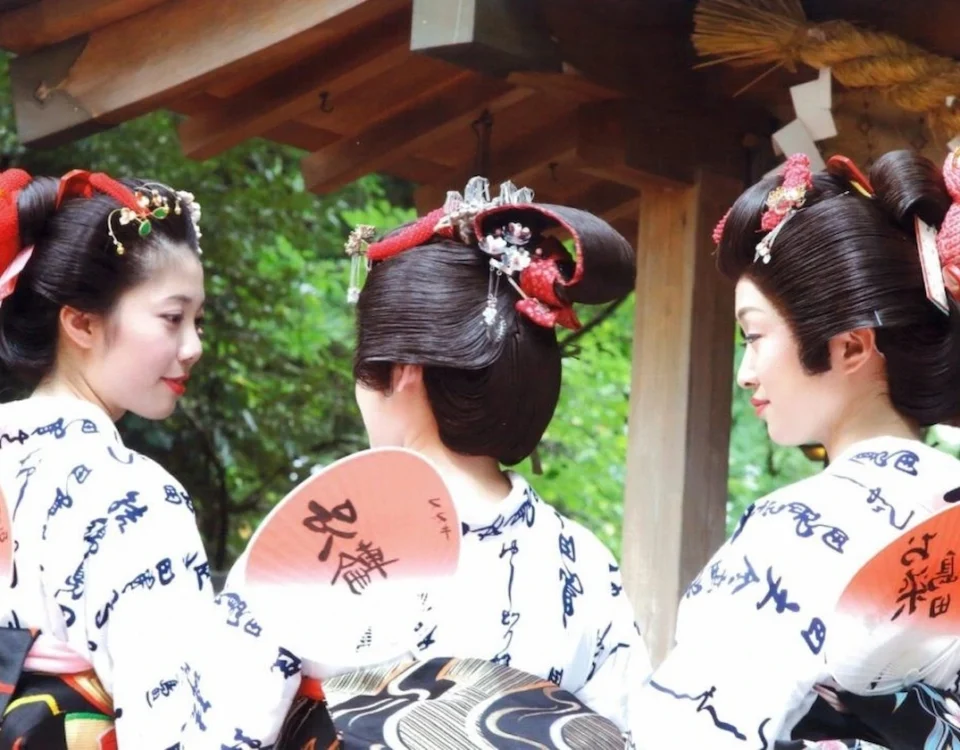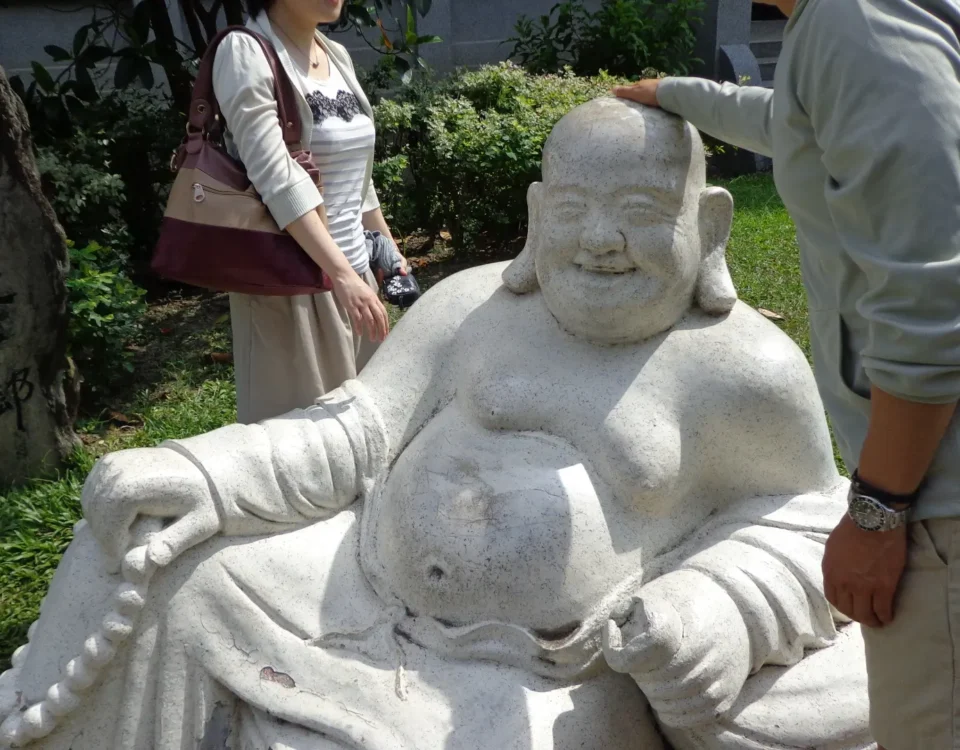If you’ve ever been interested in unique and story-rich forms of storytelling, you’ve probably heard of Kamishibai (紙芝居). This fascinating Japanese storytelling technique combines illustrations, oral storytelling, and a wooden stage called a butai. In this article, we will explore in depth the origins and evolution of Kamishibai, the famous Japanese paper theater from its ancestral roots to its influence in the world of manga and anime.
Are you ready to dive into the world of Kamishibai?
Kamishibai (紙芝居): A Centennial Tradition (Emakimono)
Kamishibai, which means “paper theater,” has its roots in ancient Japan, specifically in the 12th century. Buddhist monks used a technique called emakimono, which consisted of telling stories using a roll of paint, to communicate Buddhist moral teachings to the public. These emakimono, in retrospect, are considered an ancestral precursor to manga, as both share the fundamental idea of storytelling through sequential images.
However, Kamishibai in its most recognizable form today emerged around the 1930s, in a period of economic hardship in Japan, where morals were in decline and poverty was prevalent.
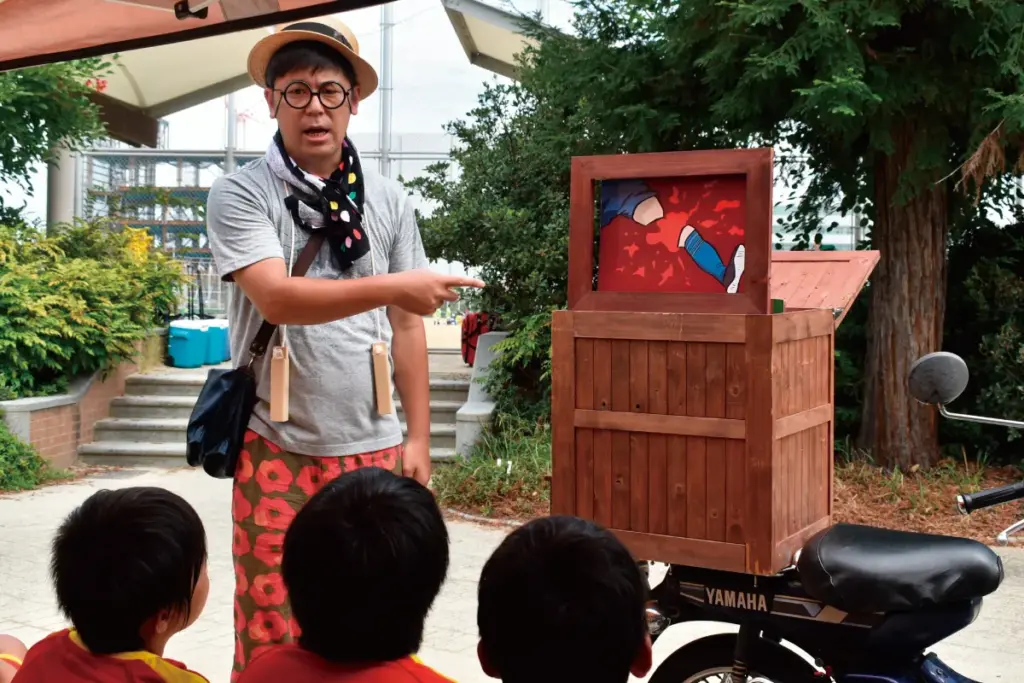
Kamishibai in Times of Crisis
During this turbulent time, Kamishibai performers took a novel approach to making a living. They would mount a presentation box on the back of their bicycles and ride through the streets, especially attracting children. Before they began their storytelling, they would take the opportunity to sell sweets and candy to their young audience. In this way, they not only supported themselves financially, but also provided an exciting escape from the difficult reality for the children.
The Golden Age of Kamishibai (紙芝居)
Kamishibai, along with comics or manga, reached its height of popularity during the Great Depression of the 1930s and after the end of World War II in 1945. This period is known as the “Golden Age of Kamishibai” in Japan and had a profound impact on Japanese society at the time.
Kamishibai ya o Kamishibaiya
In 1933, in Tokyo alone, there were an estimated 2,500 kamishibai-ya, i.e., Kamishibai storytellers. These storytellers performed about 10 performances a day, with audiences averaging about 30 children per performance. This meant that approximately one million children were part of the Kamishibai audience each day.
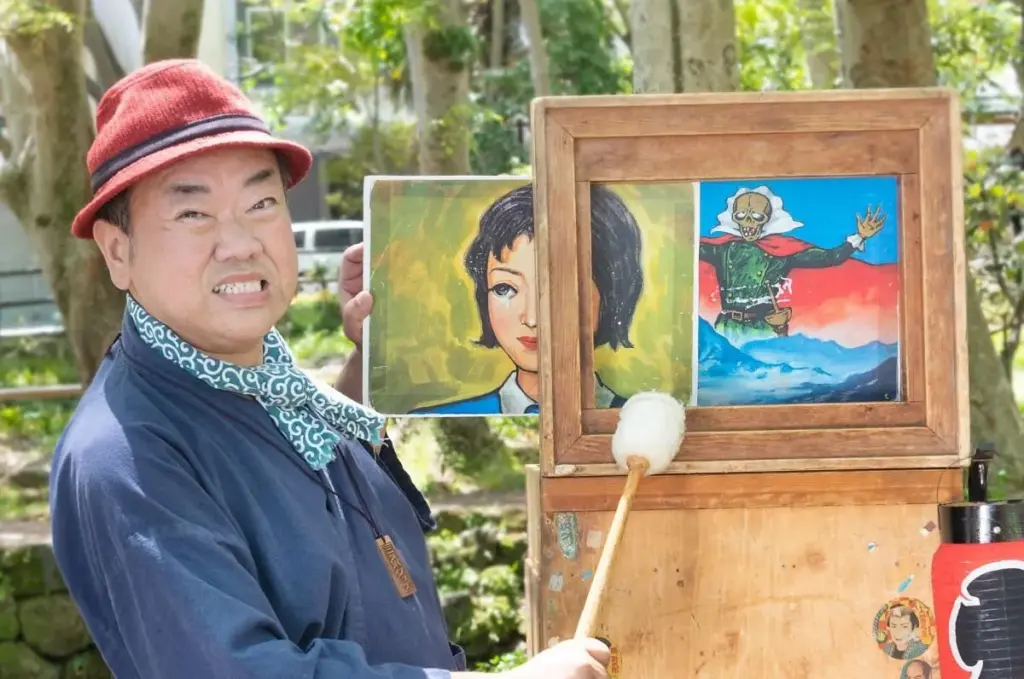
Story themes varied widely in this Japanese paper theater. From classic tales of Japanese folklore, such as Issunboshi, Momotaro and the legend of the bamboo cutter and Princess Kaguya, to heroic narratives promoting Japanese nationalism. Kamishibai not only entertained, but also shaped the perception and values of Japanese youth.
During this golden age, a thriving publishing industry developed around Kamishibai and comics. True Kamishibai artists distinguished themselves by their use of original hand-painted art, as opposed to the mass-produced art found in schools and bookstores. This demand for original art also created opportunities for talented designers.
Iconic figures in manga and anime, such as Shigeru Mizuki (known for GeGeGe no Kitarou), Goseki Kojima (creator of Lone Wolf) and Sanpei Shirato (author of The Legend of Kamui), took their first steps into the world of Kamishibai. For example, the character Takeo Nagamatsu, known as Ougon Bat in Japan and Fantomas in Brazil, made his debut in the world of Kamishibai in 1930.
The Decline and Evolution of Kamishibai
Kamishibai experienced a significant decline with the end of the Allied occupation in 1952 and the introduction of television in 1953, which was initially known as denki kamishibai or electric Kamishibai. As television became the dominant medium for entertainment, Kamishibai lost its prominence in Japanese popular culture.
However, although its popularity faded over time, Kamishibai did not disappear completely. Particularly in schools, this form of storytelling continued to be a common storytelling tool. Educators valued its ability to stimulate students’ imaginations and convey educational messages effectively.
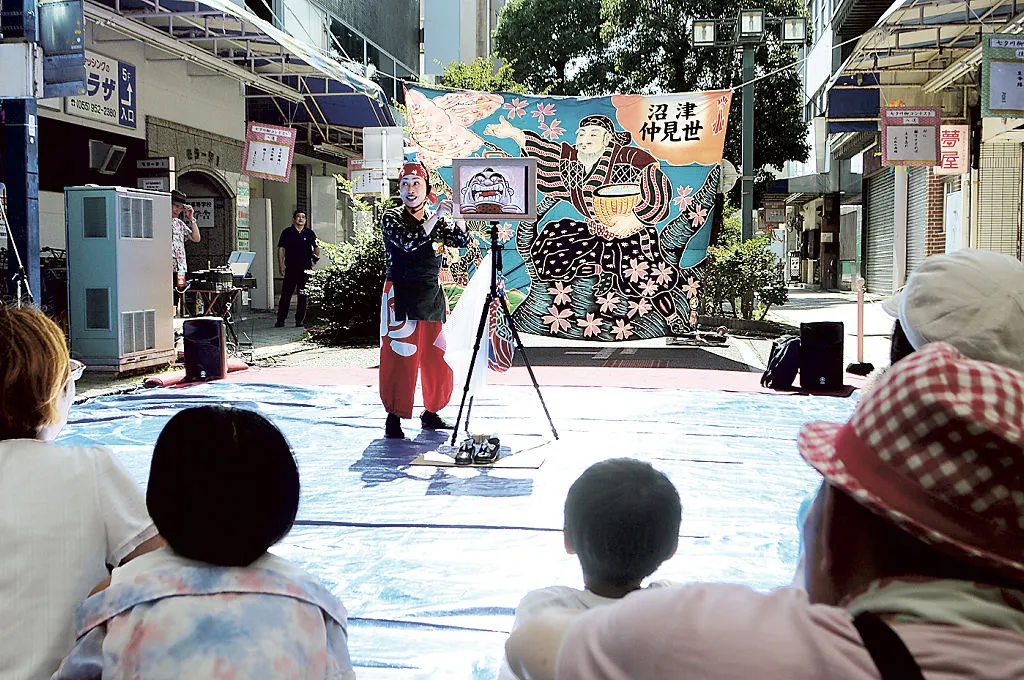
The Lasting Legacy of Kamishibaic
Kamishibai is a unique form of storytelling with deep roots in Japanese history. From its humble beginnings on the streets of Japan to its influence in the world of manga and anime, this paper theater has left an indelible mark on Japanese culture. Although its popularity has waned over time, its legacy lives on in classrooms and in the memories of those who were once captivated by the wood-framed narratives and illustrations brought to life through the voice of a storyteller.
If you ever have the opportunity to experience Kamishibai in person or immerse yourself in its stories through books and educational resources, you will realize its unique ability to transport you to imaginary worlds and teach you valuable lessons through the magic of Japanese paper theater.

